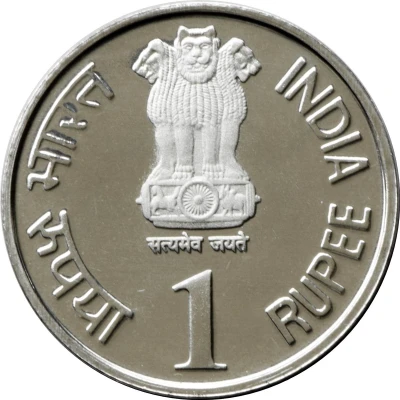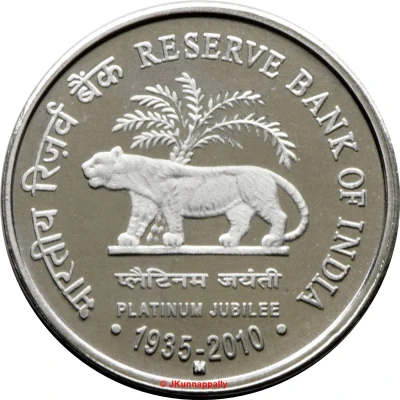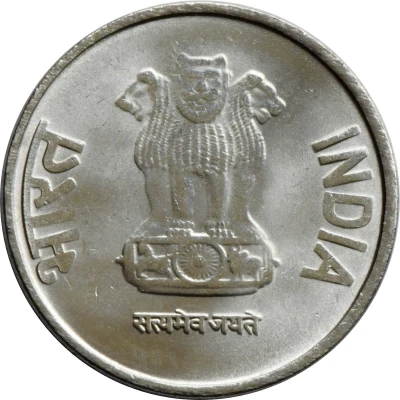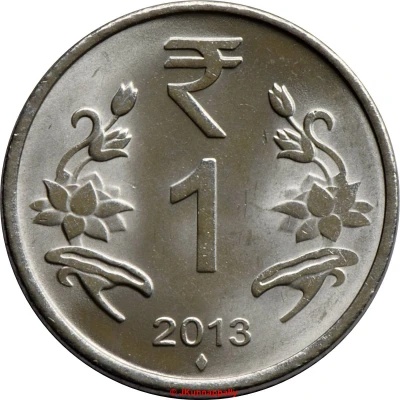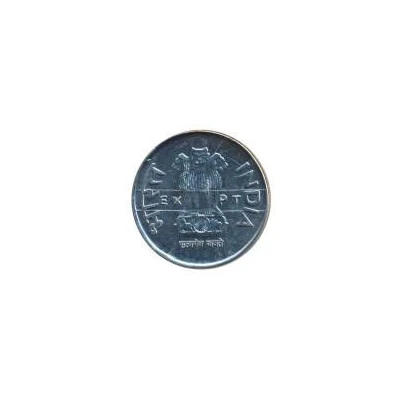
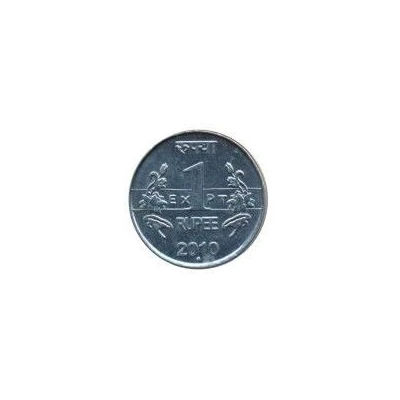

1 Rupee - EXPT Patterns
2010 year| Stainless steel | 3.8 g | 21.9 mm |
| Location | India |
|---|---|
| Issuing institution | Government of India |
| Period | Republic (1950-date) |
| Type | Pattern |
| Year | 2010 |
| Value | 1 Rupee 1 INR = USD 0.012 |
| Currency | Rupee (decimalized, 1957-date) |
| Composition | Stainless steel |
| Weight | 3.8 g |
| Diameter | 21.9 mm |
| Thickness | 1.45 mm |
| Shape | Round |
| Technique | Milled |
| Orientation | Medal alignment ↑↑ |
| Updated | 2024-10-05 |
| Numista | N#428145 |
|---|---|
| Rarity index | 100% |
Reverse
Scripts: Devanagari, Latin
Lettering:
₹
1
2013
EXPT
Edge
Smooth and Reeded in Circulation issues.
Comment
Pictured is the EXPT Bombay Variant. This coin was minted as part of an experimental series before release of the new Rupee series with the new rupee symbol.
Mint marks are those of Calcutta and Bombay, but the Calcutta mint has denied striking these coins. It is thought it may be struck in Mumbai instead. They were also struck in Hyderabad, with documentation existing confirming their striking . 2 Rupee coins were also struck, and probably 5 Rupee coins for the same purposes. EXPT is present in both regular and retrograde format. Shown below is a Calcutta Retrograde example.
Here is a Hyderabad Example:
Calcutta Mint Documentation (in response to RTI):
Documentation from: "Pattern Coins of India" - coinsofrepublicindia.blogspot.com
https://coinsofrepublicindia.blogspot.com/2012/06/pattern-coins-of-india.html
Interesting fact
The Pattern 1 Rupee coin was designed by the Reserve Bank of India's (RBI) in-house design team, led by Mr. Uday Kumar, as part of a series of new coin designs that were introduced in 2010. The coin features the national emblem of India, the Lion Capital of Ashoka, on one side and the rupee symbol on the other. The use of stainless steel in the coin's minting process was a departure from the traditional copper-nickel alloy used in earlier Indian coins, and was intended to improve the coin's durability and resistance to corrosion.



